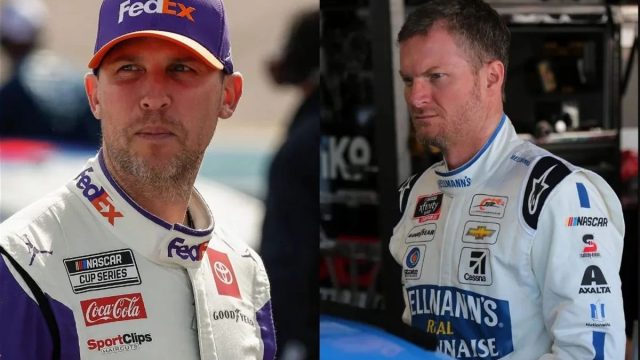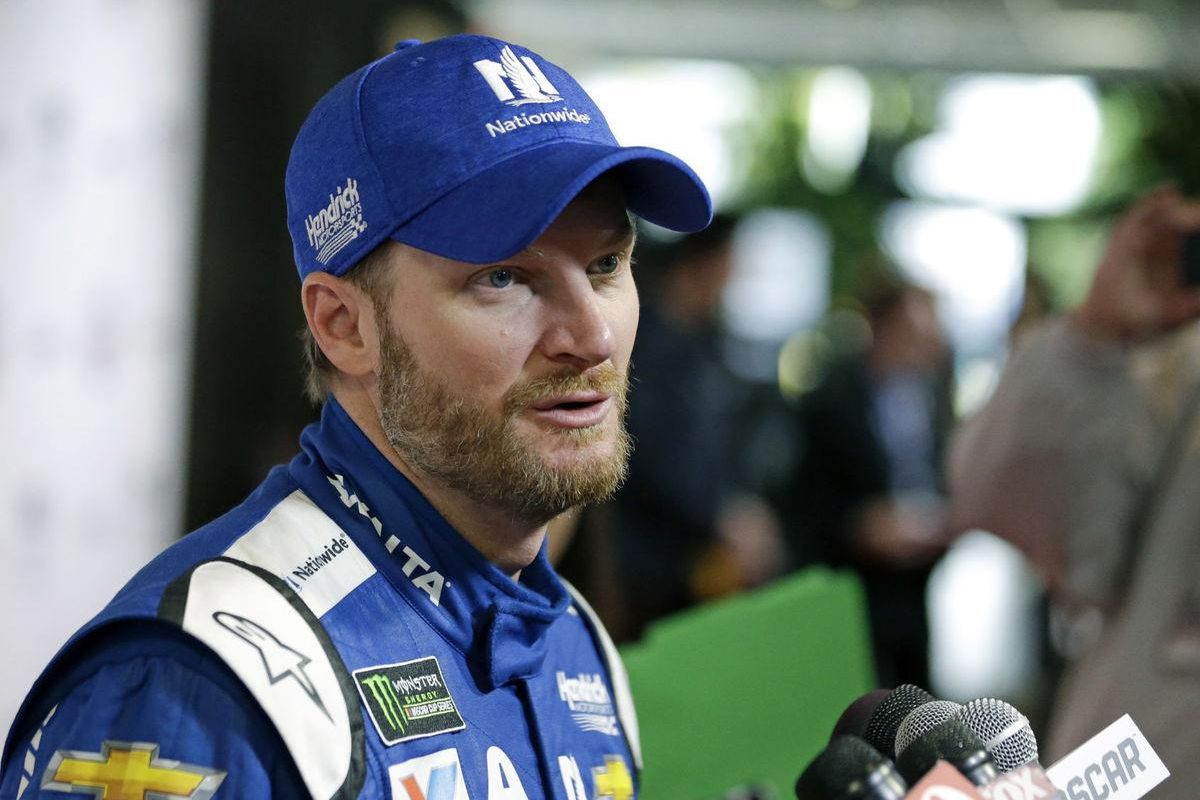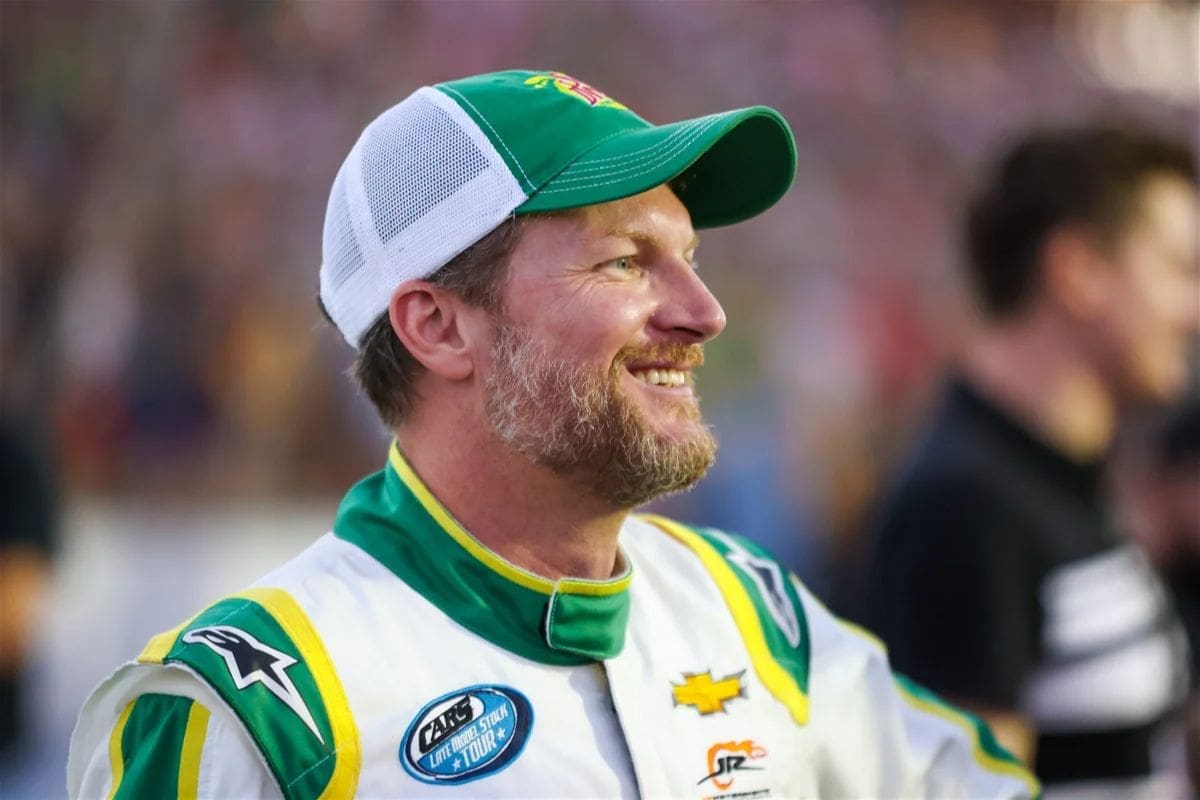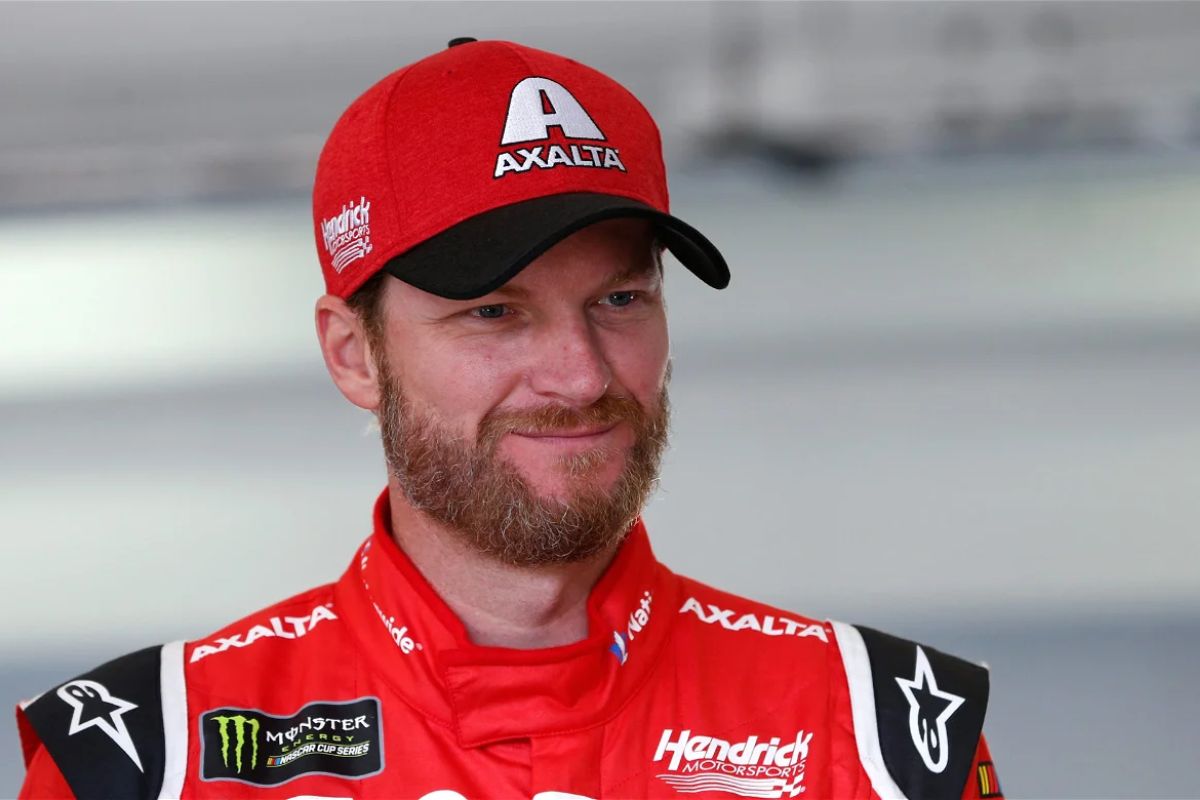Dale Jr’s Take on Aero-Blocking: In the heated discussion surrounding NASCAR’s tactical subtleties, Dale Earnhardt Jr.’s commentary on Denny Hamlin’s use of aero-blocking provides a intricate view that is both timely and critical. As the sport grapples with balancing competitive integrity and viewer engagement, Earnhardt Jr. highlights the intellectual rigor required in executing such strategies effectively. His analysis not only clarifies the technical aspects of aero-blocking but also positions it within the broader context of racing ethics and sportsmanship.
Key Takeaways
- Dale Jr. views aero-blocking as a complex, strategic aspect of modern NASCAR racing.
- He acknowledges aero-blocking’s significant impact on race outcomes.
- Dale Jr. appreciates the intellectual challenge aero-blocking adds to racing.
- He suggests the removal of digital screens to reduce aggressive aero-blocking tactics.
- Earnhardt Jr. emphasizes the need for a balance between technology and driver skill in racing.
Aero-Blocking Debate
The aero-blocking debate intensifies as Denny Hamlin’s recent victory at Dover Motor Speedway highlights its controversial use in NASCAR’s evolving competitive dynamics. Aero-blocking, a strategic tactic where a driver utilizes the airflow off their car to hinder the progress of pursuing competitors, has come under renewed scrutiny. This strategy, while not new, has gained particular prominence with the introduction of the Next Gen car, which many believe aggravates the phenomenon due to its unique aerodynamic characteristics.
Critics argue that aero-blocking detracts from the purity of racing, turning potential overtaking tactics into a game of aerodynamic chess rather than a test of raw speed and driver skill. Supporters, however, see it as a legitimate strategy, integral to the intellectual aspect of racing, requiring precise timing and spatial awareness from the driver implementing the block.
Traditionalists lean towards a perspective that racing should be primarily about mechanical performance and driver skill, with minimal external influences. In contrast, those more receptive to aero-blocking view it as an evolution of racing strategy, reflecting the technological advancements inherent in the sport.
This debate is further complicated by the mixed reception of the Next Gen car among teams and drivers. While some see it as a fresh challenge that levels the playing field, others criticize it for amplifying tactics like aero-blocking, which they argue undermine competitive integrity.
Gluck’s Interview with Chris Gabehart
Further exploring the complexities of aero-blocking, Jeff Gluck inquired about Chris Gabehart’s perspective during a post-race interview. Gabehart, a seasoned crew chief, expressed reservations about the prevailing interpretations of aero-blocking, particularly criticizing Kyle Larson’s approach to the defensive tactic. He articulated that aero-blocking should be viewed as an inevitable evolution in racing strategy, similar to the strategic subtleties observed in fuel-mileage races at Superspeedways.
“So we just left Talladega, and we’ve seen what direction that racing has evolved to. 20 years ago at Talladega, I mean, we went through a phase where we’re Tandon drafting and way back when you’d have six cars finish on the lead lap, strung out all over the track. So the sport is evolving, like any sport would and aero blocking is no different.”-Gabehart
Gabehart likened the evolution of aero-blocking to other tactical shifts that have historically emerged in motorsports, suggesting that the sport’s nature continually adapts to technological and strategic advancements.
Dale Earnhardt Jr.’s Comment
Dale Earnhardt Jr., a prominent figure in NASCAR, recently expressed his views on aero-blocking, aligning with Jeff Gluck’s interpretation during a detailed discussion on his podcast. Earnhardt Jr.’s insights are particularly valuable given his extensive experience and deep understanding of the dynamics of NASCAR racing. In his comments, he emphasized the complexity and strategic nature of aero-blocking, suggesting that it involves a high level of skill and situational awareness from the driver.
Expanding on the topic, Earnhardt Jr. highlighted that aero-blocking isn’t merely about obstructing another driver’s path but is an intricate tactic used to manage airflow between cars at high speeds. This technique can be crucial in maintaining position and can influence the outcome of the race, making it a critical skill in a driver’s arsenal. His perspective sheds light on the sophistication of modern racing techniques and the continuous evolution of strategic elements within NASCAR.
Gluck’s Explanation and Dale Jr.’s Response
In an effort to clarify the complexities of aero-blocking, Jeff Gluck presented an informative video that elaborated on the evolution and current intricacies of this racing technique. In his analysis, Gluck emphasized how digital technology, particularly the advent of digital screens, has transformed drivers’ ability to execute aero blocks with unprecedented precision.
Gluck’s thorough presentation led to an insightful exchange in the comments where Dale Earnhardt Jr. briefly responded with an affirmative ‘Indeed.’
This whole conversation online this week is getting merged into a bunch of different things. Is anyone arguing dirty air is new? Not that I've heard. The topic this week has been about air-blocking as a technique used by the leader to defend. And that is relatively new (within… https://t.co/GajNVRX1Yl
— Jeff Gluck (@jeff_gluck) April 30, 2024
Dale Jr.’s Proposal to Eliminate Digital Screens
Amid ongoing debates about the role of technology in racing, Dale Earnhardt Jr. advocates for the removal of digital screens from drivers’ dashboards to reduce aggressive aero-blocking tactics. He critiques the current use of digital cameras, which provide drivers with an excessively detailed view of the racing dynamics occurring behind them. This, he argues, facilitates overly strategic blocking tactics that can detract from the authenticity and excitement of the race.
Dale Jr.’s perspective highlights a broader dialogue concerning technological integration in sports, where advancements intended to improve performance and safety might also accidentally impact the competitive nature of the sport. The reliance on digital feedback mechanisms, like rear-view cameras, has transformed how drivers engage with the race environment.
“One thing they can do is to get rid of that digital camera. The digital camera allows the driver very very good understanding of exactly what’s going on behind him…I just feel like that the digital camera is too much, too good, too helpful. I think as long as it’s not a safety issue, right? You could take the camera out. Make the drivers go back to more traditional mirrors to try to see what they can see.” -Dale Jr.
News in Brief: Dale Jr’s Take on Aero-Blocking
The insights provided by Dale Earnhardt Jr. on the practice of aero-blocking, particularly in the context of the Denny Hamlin controversy, highlight its significance within NASCAR strategies. This discussion emphasizes the intellectual challenges drivers face, beyond physical driving skills.
Earnhardt Jr.’s analysis not only enhances the debate on aero-blocking but also suggests potential shifts in race strategies, indicating a significant moment for NASCAR’s regulatory considerations and the evolution of racing tactics.
Our Reader’s Queries
Q. What happened with Dale Earnhardt Jr?
A. Dale Earnhardt Jr. has urged his fans not to criticize NBC following his departure from the network. According to a report by Andrew Marchand of The Athletic last week, Earnhardt Jr. will be exiting NBC’s NASCAR coverage after six years to join the broadcast teams of Amazon and WBD.
Q. Why did Dale Earnhardt Jr quit?
A. Earnhardt’s contract with NBC concluded at the close of 2023, and earlier this year, he expressed uncertainty about renewing his agreement with the network. “I’m currently working through what that looks like for me,” Earnhardt stated. “I definitely love being in the broadcast booth and want to continue doing that.”
ALSO READ: Dale Earnhardt Jr.’s HoF Outrage: Controversial Picks Revealed



